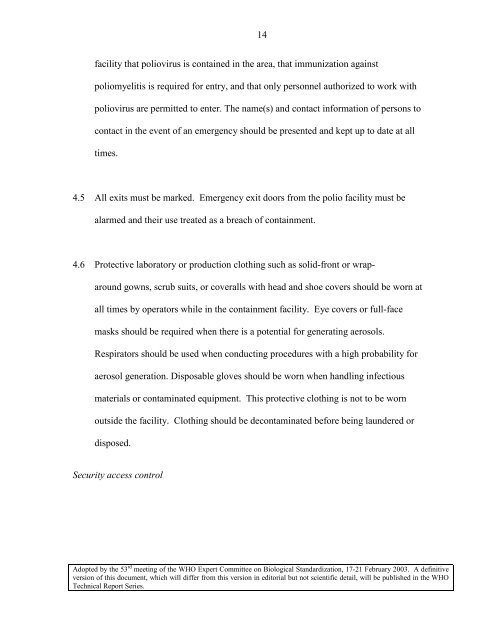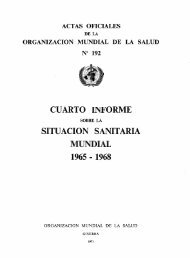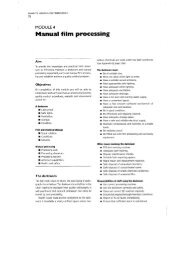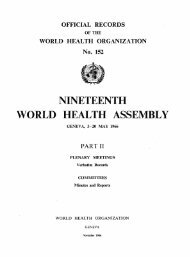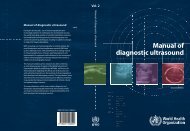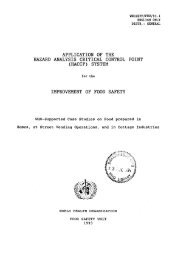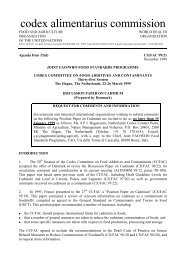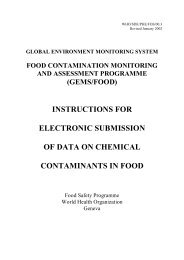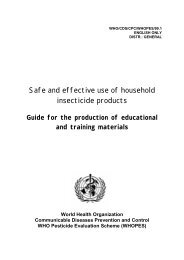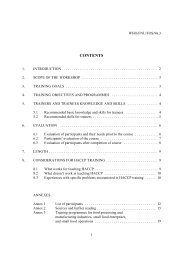IPV BSL-3/polio containment guidelines (Feb 2003) - World Health ...
IPV BSL-3/polio containment guidelines (Feb 2003) - World Health ...
IPV BSL-3/polio containment guidelines (Feb 2003) - World Health ...
You also want an ePaper? Increase the reach of your titles
YUMPU automatically turns print PDFs into web optimized ePapers that Google loves.
facility that <strong>polio</strong>virus is contained in the area, that immunization against<br />
<strong>polio</strong>myelitis is required for entry, and that only personnel authorized to work with<br />
14<br />
<strong>polio</strong>virus are permitted to enter. The name(s) and contact information of persons to<br />
contact in the event of an emergency should be presented and kept up to date at all<br />
times.<br />
4.5 All exits must be marked. Emergency exit doors from the <strong>polio</strong> facility must be<br />
alarmed and their use treated as a breach of <strong>containment</strong>.<br />
4.6 Protective laboratory or production clothing such as solid-front or wrap-<br />
around gowns, scrub suits, or coveralls with head and shoe covers should be worn at<br />
all times by operators while in the <strong>containment</strong> facility. Eye covers or full-face<br />
masks should be required when there is a potential for generating aerosols.<br />
Respirators should be used when conducting procedures with a high probability for<br />
aerosol generation. Disposable gloves should be worn when handling infectious<br />
materials or contaminated equipment. This protective clothing is not to be worn<br />
outside the facility. Clothing should be decontaminated before being laundered or<br />
disposed.<br />
Security access control<br />
Adopted by the 53 rd meeting of the WHO Expert Committee on Biological Standardization, 17-21 <strong>Feb</strong>ruary <strong>2003</strong>. A definitive<br />
version of this document, which will differ from this version in editorial but not scientific detail, will be published in the WHO<br />
Technical Report Series.


